Are you in the market for a new battery? If so, you'll want to check out this comprehensive review of the AmpereTime (Now rebranding to LiTime) 12V 200AH LiFePO4 lithium battery. How’s the capacity it is? Thanks to Professor Hobo, we've got an in-depth test that will help you evaluate the battery's capacity and overall performance.
Part 1: The Basic Information of the Battery
This AmpereTime (Aka Litime) battery is a 12V 200AH/ 2560WH lithium iron phosphate battery using grade A cells. Good for at least 4000 cycles (11 years cycled daily) .
The size of the battery is approximately 21 x 8 x 9 inches,46 lbs.
The BMS inside this battery is a 100 amp/ 1280Wh. The rate is for both charging and discharging. Which means, you can pump 1280W in and out. And it does have overcharge and over discharge protection as well as over current and short circuit protection. While it doesn’t offer cut off on low temperature feature it does offer a high temperature protection.
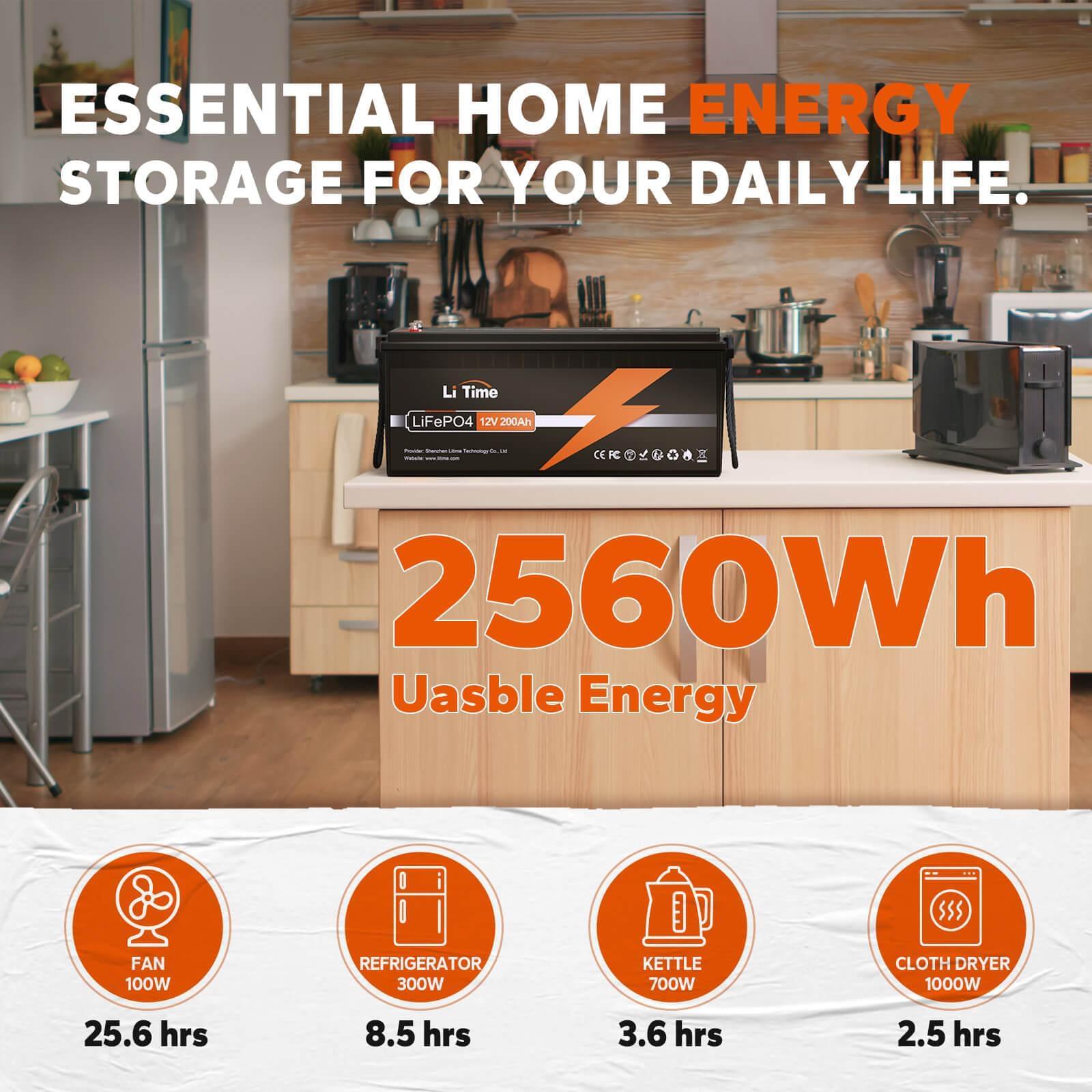
The ability to series or parallel these batteries together. This supports a 4s4p configurations which is 4 in series and 4 times in parallel for a maximum of 48 volts at 800 amp hours or 41kWh of capacity that’s more than what the average household in America uses in one day.
The quality of the case is an ip65 water resistant rated ABS plastic case so you can leave the battery out in the weather and not worry about it.
The charge temp is from 32°F - 122°F, discharge from -4°F to 140°F.
This battery comes equipped with a variety of features designed for convenience and safety. Nylon handles are located on both sides of the battery, allowing you to easily carry and maneuver it as needed. Additionally, the battery includes two pairs of M8 size bolts with lock washers, as well as protective covers that can be placed over the bolts to prevent accidental short circuits.
For added peace of mind, the battery also comes with a packet of paperwork that includes a user manual. With these features, handling and using this battery is made simple and safe.
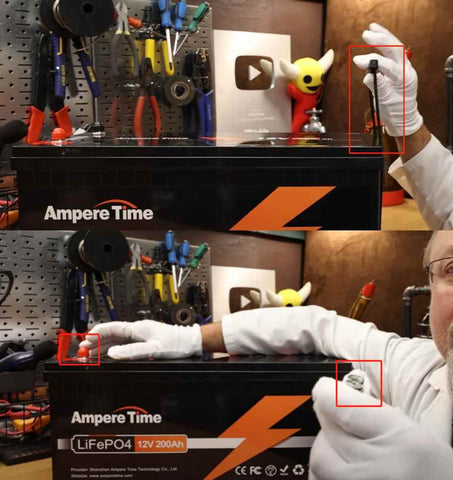
With its impressive features, this battery certainly sounds promising. But how does it perform in the real world? Let's head into the secret laboratory and put it to the test.
We'll be evaluating every aspect of this battery, from its capacity to its durability and safety features. By the end of our testing, we'll have a complete picture of just how well this battery performs.
So come along with us as we put this battery through its paces and see if it can pass all the tests.
Part 2: The Testing
2.1 Battery Capacity Test
Our first order of business is to test the battery capacity. According to the manufacturer, this battery has a capacity of 200AH. But can it really deliver on that promise? Let's find out.
We'll be using rigorous testing procedures to accurately measure the battery's capacity and ensure that it lives up to its specifications. By the end of this test, we'll have a clear idea of just how much power this battery can provide.
So stay tuned as we put this battery through its paces and see if it can indeed reach its advertised 200AH capacity.
The results of our battery capacity test are in, and they're impressive. This battery has exceeded its advertised capacity, achieving a score of 209.6 amp hours. That's almost 210 amp hours out of the stated 200, or an impressive 105% of the rated capacity.
This means that not only does the battery live up to its specifications, it actually provides an extra 5% of capacity for free. So you can rest assured that this battery will deliver more than enough power for your needs, with some room to spare.
With such outstanding performance in our capacity test, we're eager to see how this battery performs in other areas. Stay tuned for more test results, as we continue to put this battery through its paces in the secret laboratory.
2.2 The Ability of BMS
It's time to put this battery's BMS to the test with our maximum rate charge and discharge test. During this test, we'll be evaluating the battery's surge capability by drawing as much power as possible from the battery before it shuts down.
We'll also be monitoring the battery's temperature closely to ensure that it can handle high startup loads without overheating or suffering any damage. With a BMS rated at 100 amps, we'll be pushing the limits of what this battery can handle to see how it performs under stress.
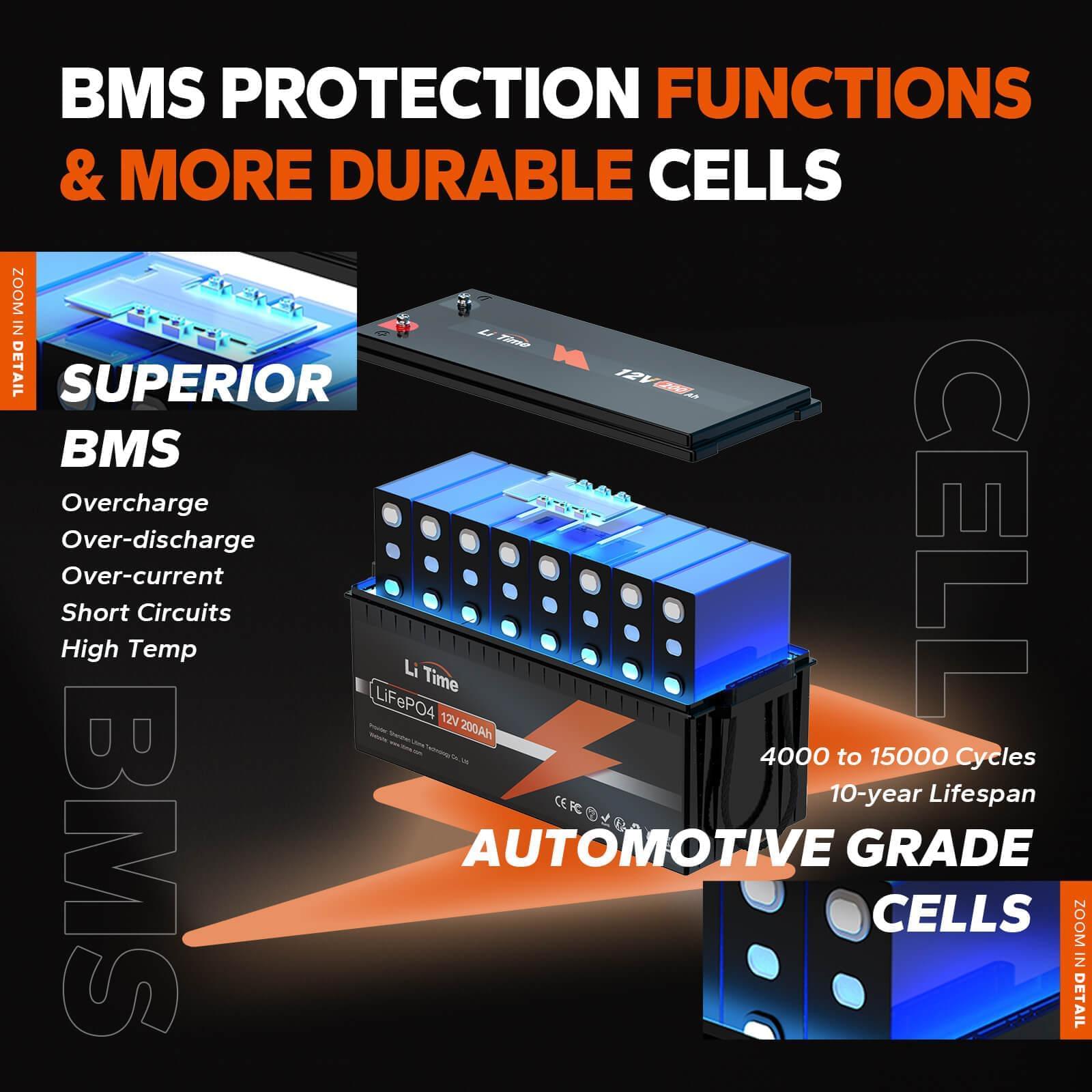
During the test, we'll be simulating high startup loads such as those required by air conditioners or other appliances that draw a lot of power for a few seconds. We'll be looking for any signs of overheating or other issues that could impact the battery's performance or reliability.
So stay tuned as we push this battery to its limits and see just how well it can handle high surge loads without breaking a sweat.
Our maximum rate charge and discharge test is complete, and the results are in. During the test, we pushed this battery to its limits and evaluated its ability to handle high startup loads without suffering any damage.
We found that the battery was able to handle a load of up to 350 amps before shutting down. This is an impressive result, indicating that this battery can handle high surge loads with ease.
But what about extended runtime? To evaluate this, we'll need to conduct further testing to see how long the battery can sustain a high load before it reaches its minimum voltage threshold.
Stage 1: Drawing a load of 300 amps
To evaluate the extended runtime of this battery, we'll conduct a further test. We'll start by drawing a load of 300 amps from the battery and observe how it performs over time. If it can sustain this load without shutting down, we'll continue to increase the time and gradually decrease the load until we find the maximum load that the battery can maintain for five minutes without shutting down.
This test will give us a better idea of how well the battery can perform under sustained high loads, which is critical for applications such as running air conditioners or powering other heavy-duty appliances.
We'll be monitoring the battery's temperature closely during this test to ensure that it doesn't overheat or suffer any damage. With these precautions in place, we're confident that we can accurately evaluate the battery's extended runtime capabilities.
So stay tuned as we put this battery through its paces and see just how much load it can handle over an extended period.
Our extended runtime test is complete, and the results are in. During the test, we started by drawing a load of 300 amps from the battery and observed how it performed over time.
After about 1 minute and 11 seconds, the battery thermally shut down due to overheating. The BMS kicked in and completely cut off the battery until it could cool down to a safe level. After waiting just under 5 minutes, the battery came back online at 13.3V.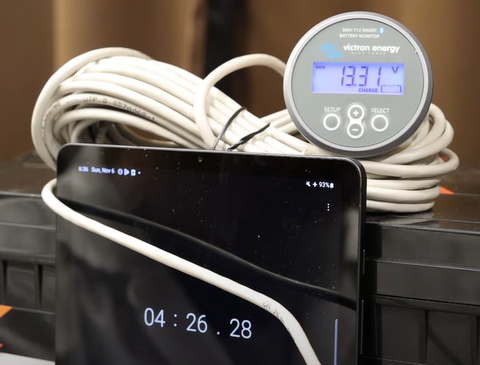
Stage 2: Drawing a load of 200 amps
To further evaluate the extended runtime capabilities of this battery, we'll conduct another test. This time, we'll start by drawing a load of 200 amps from the battery and see if it can sustain that load for five minutes without shutting down.
By testing the battery at a lower load level, we can get a better idea of its endurance in real-world applications where sustained power is required. We'll be closely monitoring the battery's performance and temperature during the test to ensure its safety and reliability.
So stay tuned as we put this battery through another round of testing and see just how well it can handle a sustained load of 200 amps over an extended period.
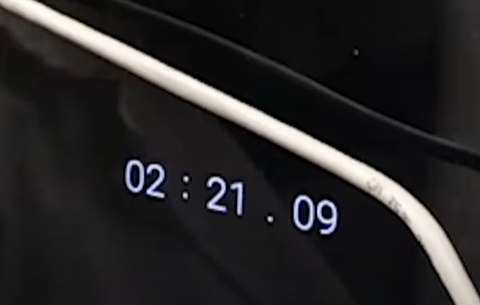
After 2 minutes and 21 seconds, the BMS overheated, causing the battery to shut down. However, the temperatures we recorded during the test were all within reasonable ranges for an overheated battery. The middle of the battery was 81.1°F, the top of the battery was 78°F, the positive terminals were 108.4°F, and the negative terminals were 111.2°F.

Overall, while the battery was unable to sustain the load of 200 amps for five minutes without shutting down, its temperatures remained within safe limits during the test. This suggests that this battery may be better suited for applications where high surge loads are required rather than sustained loads over an extended period.
Stage 3: Drawing a load of 150 amps
To further evaluate the extended runtime capabilities of this battery, we'll conduct another test at a lower load level. This time, we'll draw a load of 150 amps from the battery and see how long it can sustain that load without shutting down.
During the test, we'll be monitoring the battery's performance and temperature closely to ensure its safety and reliability. This will give us a better idea of the battery's endurance in real-world applications where sustained power is required.
After five minutes of testing at a load of 150 amps, the battery performed well and didn't experience any issues or shutdowns. It appears that this battery can handle a sustained load of 150 amps for an extended period, making it a good choice for applications where reliable, sustained power is required.
With these test results in mind, you can make an informed decision about whether this battery is the right fit for your specific application and requirements.
Part 3: Test How Fast Can We Charge
To evaluate the charging capabilities of this battery, we'll conduct a fast charging test. We'll run the battery at a charge rate of 110 amps for at least five minutes and observe how well it performs.
During the test, we'll be monitoring the battery's performance closely to ensure that it can handle the high charging current without issue. This will give us a better idea of how quickly we can recharge the battery and get it back up to full power.
After completing the test, we found that the battery was able to handle a charging rate of 110 amps for at least five minutes without any problems. At the finish line, the battery was charging at 112 amps, demonstrating its fast charging capabilities and ability to handle high charging currents without issue.
With these results in mind, you can confidently use this battery in applications where fast charging is required, knowing that it can handle high charging currents with ease.
Related reading: Can I Charge a LiFePO4 Battery with A Normal Charger
Conclusion
In summary, this battery performed well in all of the tests, demonstrating its capacity, surge capability, endurance, and fast charging capabilities. The BMS rated at 100 amps worked as expected, providing important safety features that ensure the longevity and reliability of the battery.
Overall, we're impressed with this battery's performance and quality, given its affordable price point. Additionally, the 5-year warranty adds extra peace of mind for anyone considering purchasing this battery. Whether used in marine vessels, recreational vehicles, solar energy systems, golf carts or other off-grid and mobile setups, these batteries provide a dependable and sustainable power solution.
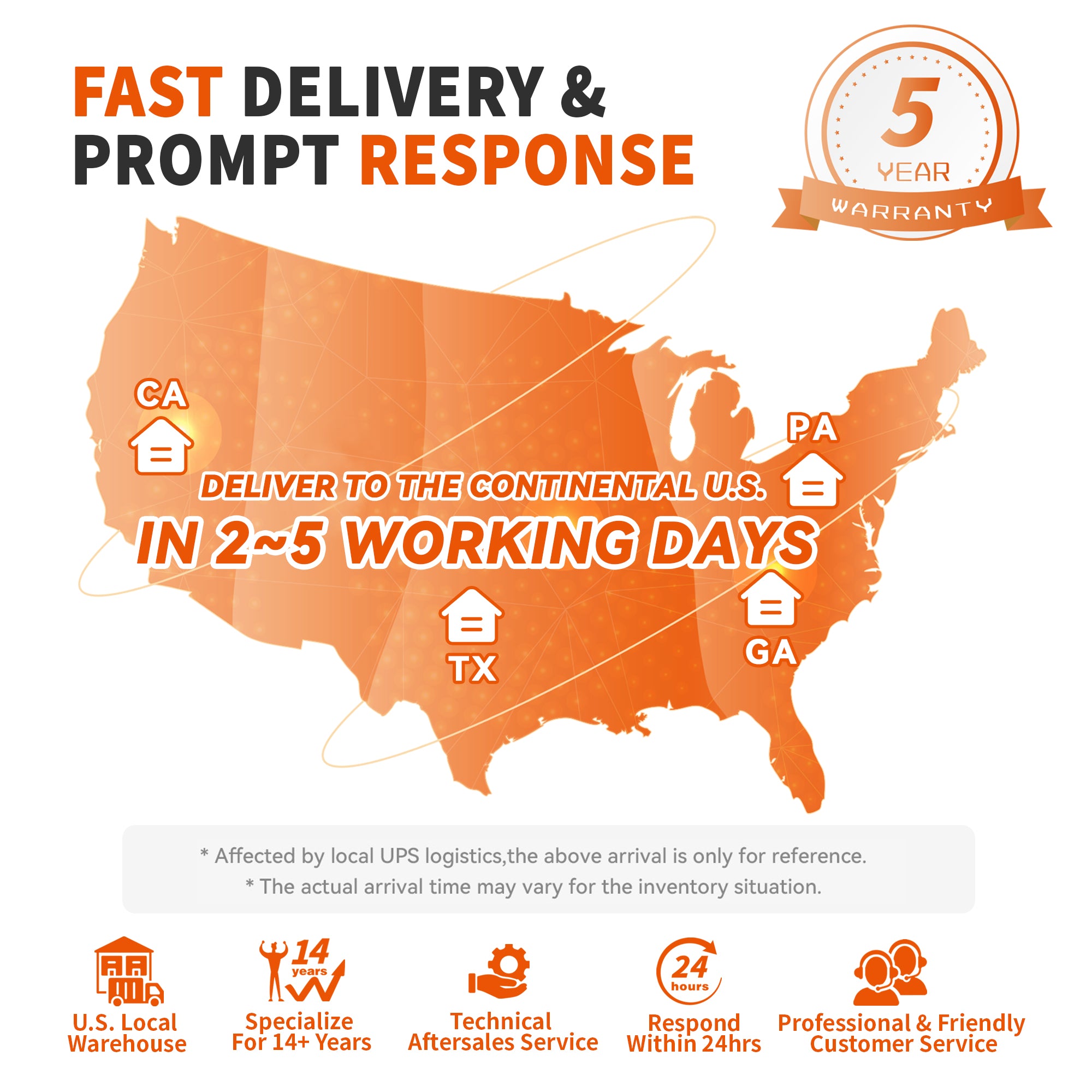
In conclusion, it's highly recommended that this battery for anyone in need of a high-quality, reliable, and affordable power source.
LiTime also provides 12V 200Ah plus which has built-in 200A BMS and self-heating version for cold winter day.
FAQs about LiTime
1. Will LiTime carry on the warranty and service of Ampere Time products?
Yes! Litime will cover all Ampere Time’s product warranties and services. The warranty and services of the products purchased from Ampere Time will be valid as promised when you purchased them. If you have any questions or need any help while using our products, please feel free to contact us both at service@litime.com or service@amperetime.com
Learn more about the Rebranding Announcement
2. Are there any changes between the products sold by LiTime and Ampere Time?
LiTime provides the same level of quality, service, and price for the same models as sold by Ampere Time, while LiTime has more occasional promotions. If you’re considering expanding your existing battery system, we recommend you purchase LiTime products of the same model for series and parallel connection.
Visit LiTime Youtube reviews and users stories for more understanding of LiTime batteries.
-------------------------------------------------------------------------------------------------------
You May Also Like
<<< LiFePO4 Lithium Batteries In Series VS Parallel: How-To & Everything You Need To Know
<<< LiThium Battery Not Charging? Troubleshooting And Best Practices

































































































































 30-Day Price Guarantee
30-Day Price Guarantee





